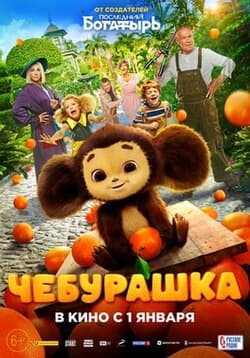Cheburashka Film Becomes Russia's Highest-Grossing with 6.5 Billion Rubles, Solidifying Cultural Icon Status

The beloved Soviet-era character, Cheburashka, has reaffirmed its profound cultural significance with a recent film becoming the highest-grossing in Russian history. Created in 1965 by Eduard Uspensky, the large-eared, "unknown to science" creature originated in Soviet Russia, transcending its animated roots to become a powerful symbol across the post-Soviet world. As commentator Ian Miles Cheong stated:
"Cheburashka is a unifying icon for the entire post-Soviet world, created by a Russian artist and loved from Ukraine to Kazakhstan."
Cheburashka first appeared in Uspensky's 1965 book before being adapted into popular stop-motion animated films by Soyuzmultfilm, starting in 1969. Often dubbed the "Soviet Mickey Mouse," the character embodies themes of innocence, kindness, and the importance of friendship and belonging. Its name, derived from the Russian verb "cheburakhnutsya" (to tumble), reflects its clumsy arrival, endearing it to generations with stories emphasizing resilience and community.
Beyond its origins, Cheburashka has maintained a remarkable presence, serving as a nostalgic link across former Soviet republics. Its universal appeal is evident in its adoption as the official mascot for the Russian Olympic team from 2004 to 2010. The character has also gained significant international popularity, particularly in Japan, where new animated series and films have been produced, and in European countries under various localized names.
The character's renewed prominence was highlighted by the 2023 full-length film, "Cheburashka," which achieved unprecedented box office success in Russia, grossing approximately 6.5 billion rubles. This cinematic triumph solidified its status as the highest-grossing Russian film ever, demonstrating its continued commercial viability and deep cultural resonance. The film's immense popularity has been interpreted by some as a societal desire for comforting nostalgia and an escape into childhood innocence.
The artistic depth of Cheburashka stems from its creators, including director Roman Kachanov and art director Leonid Shvartsman, who infused the character with deeper symbolic meanings. Many creative minds behind the original animations were Jewish, subtly embedding themes of "unknown origins" and the search for belonging, reflecting their own experiences. This nuanced portrayal contributes to the character's lasting appeal, distinguishing it from what Ian Miles Cheong describes as "some soulless cash grab" and positioning it as "a tribute to the real roots of Eastern European creativity."
Cheburashka's journey from a children's book character to a unifying post-Soviet icon and a record-breaking cinematic success underscores its timeless appeal. Its ability to evoke nostalgia while representing core values of friendship and resilience ensures its continued relevance in popular culture. As Cheong suggests, owning a piece of Cheburashka is "investing in legacy, unity, and the internet’s next cultural wave," signifying its ongoing impact as a cherished symbol.